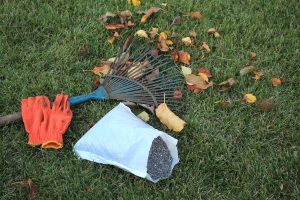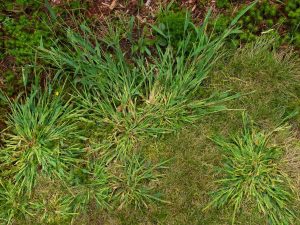This is Aaron Suttenfield with or RDS lawn care. And we are on a client’s lawn here. They called us this morning and wanted to report that they were having some grass that was dying. And we had been here to treat a few days ago, maybe probably about a week ago, today, three days ago. So we’re in that range. I’m here with James, our operations manager. And they, they just assumed by the way the grass looks and I agree that man something, something got sprayed here that that that hurt this turf. And so we responded within probably about 45 minutes of getting a text from the client, we came out and inspected the lawn. And it’s not turf burns, not herbicide burns. It’s not fertilizer burn. It’s fall Armyworms. And this is probably one of the best descriptions I can show you of what fall armyworms are capable of. And so I’m going to turn the camera on here and talk to you. The neighbor is mowing his yard over there so I’m sorry about the sound, but we’ll talk loud. So I’m here with James. Now, James, go ahead and show us what’s going on here. And we’ll see if we can pick this up on here.
It’s tough on the camera to see, but the grass is moving. There’s one right there. Right here is when you get up close there, Aaron.
See him right there. And they are all over, he can just look out and see look at the grass I can look out and see them in all different places. There’s one right here down in there. There’s one right, I see the grasses move you can see the armyworms down in there, they’re feeding
Now I’m gonna step back here. And let’s show them what this grass in this section two days ago was green right here. They have moved through this entire section since Monday. At one point, the grass looked like this right here. It’s August here the grass is stressed a little bit. But these Armyworms have wiped out this entire lawn. And let’s see if we can find some more. And they’re there. They’re moving like an army of worms that are coming through here. And they’re wiping this grass out. Let’s find another one. James.
There’s a baby one right there. You look for the grass to be moving, That’s where you find them first.
Yeah, and you’ll literally just see the grass kind of move the edge with it. They’ve already he’s moving on down the line here. Yeah, there’s a scene, he’s gonna move over and start eating some more fresh turf. And what they do is they will, they’ll eat that eat on the turf, and then they’ll move to fresh turf. So this is a situation where an insecticide needs to be applied. We don’t believe in applying insecticides unless it’s needed. And, you know, to be environmentally friendly and respectful of the other environment. But in this case, this is where we do need to apply an insecticide when you get here pretty quick. Before we lose more of this turf, you know, good news. If you want to look at the silver lining, we’re probably about 15 to 20 days from the fall seeding windows. So this turf can be repaired and we’ll get healed back up with fall seating and be back to normal. But this is unfortunate. It can happen. And it literally can happen overnight. So if you’re a client of ours, it’s important that you notify the office. They’re feeding right here. It’s important that if you see something going on with your lawn that you report it so that we can come out and inspect and see what’s happening in your lawn. We do that at no charge in-between visits. And that’s part of our customer service. James is located I’ll show you real quick. If you’re just joining us we’re looking at a lawn that has fall Armyworms show you here they’ve actually already destroyed this part of the lawn. And James actually while we were talking here has found him in this area here. I just watched Nick can see the grass just twig twitching so so they’re, they’re digging down below there’s eating, they’re moving from this section that they’ve already damaged or moved into this section that’s undamaged. So, if you see an area in your lawn at this time of year that just overnight, goes from healthy turf to stressed out. I’ll flip it back around to a stressed-out section like this overnight. You may have fall armyworms, you can dig down in the grass and if you see a little worm moving through there, that’s what it is. So either give up If you’re a client a call if you’re not a client you want us to help you give us a call or give your service provider a call to get you to get you helped out. Hope that helps you guys in your lawn and if you have any questions, give us a call. This is RDS lawn care. Talk to you later.

The Impact Of Lawn Fertilization On Outdoor Activities
Lawns are the perfect place to enjoy outdoor activities with your family and friends. However, having a healthy lawn requires regular fertilization in order to



